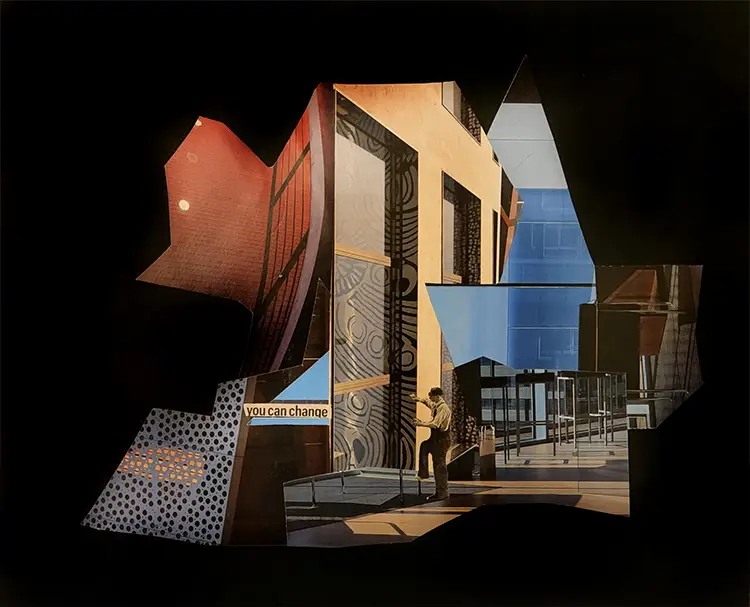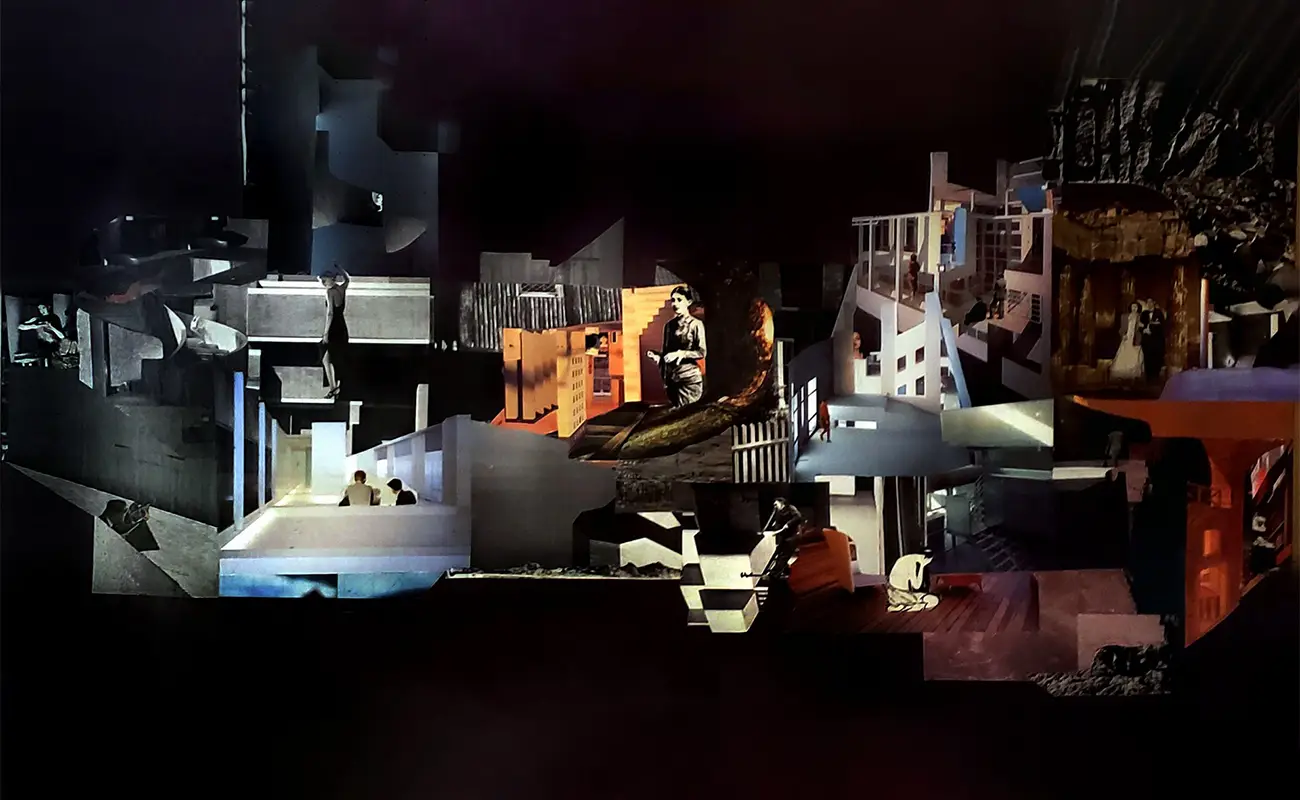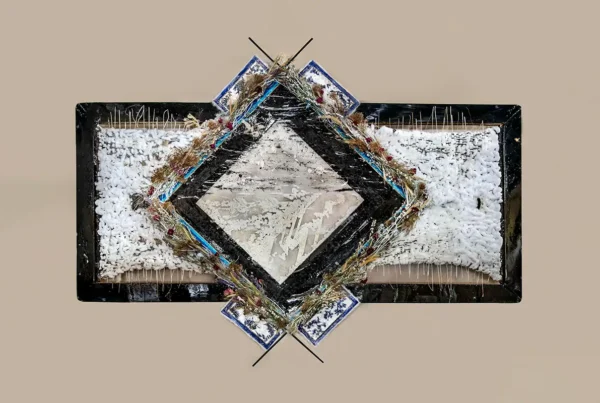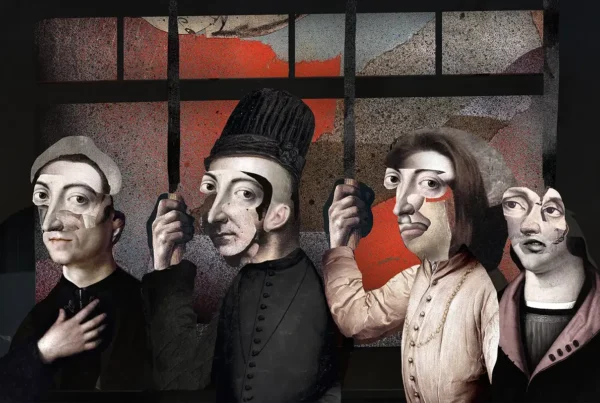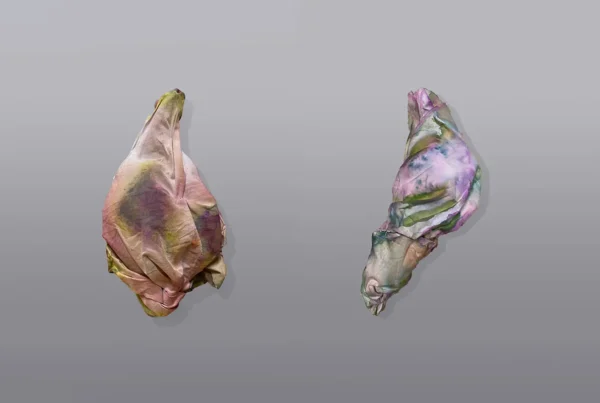“The process is everything – the means is the end.”
Between Urban Density and Philosophical Inquiry
Kenneth Ricci’s artistic journey stands as a testament to the unpredictable nature of creative discovery, where passion and curiosity outweigh formal training. A lifelong New Yorker, Ricci’s deep connection to Manhattan’s vibrant streetscape permeates his work, shaping both his subject matter and artistic sensibility. Although his educational background is rooted in comparative literature and philosophy, and his professional life spanned roles in education, Ricci’s artistic voice emerged from outside traditional art institutions. His initial foray into the art world came through the art department of New York’s Strand Bookstore, where exposure to artists like George Tooker—whose evocative portrayals of modern existence struck a personal chord—planted early seeds of inspiration.
Ricci’s retirement from teaching marked the unexpected beginning of his creative practice. What started as a modest experiment—adhering postcards to a black filing cabinet—quickly evolved into an exploration of collage as an expressive medium. Lacking formal art education, his process was intuitive and driven by experimentation, where each composition unfolded organically through the juxtaposition of cut images. This uninhibited approach, initially free from considerations of art theory, allowed Ricci to engage with imagery in a raw, direct manner. Over time, his technique matured from assembling large-format collages on Masonite boards to working on smaller, elongated panels where narrative elements began to crystallize.
The emergence of storytelling within his collages became a defining characteristic of Ricci’s artistic voice. Series like “Femma Dilemma,” “AT/RT,” “3:43 AM,” and “Hotel Kafka” marked a pivotal shift toward more deliberate thematic exploration. With each series, the act of titling transformed from a casual afterthought into an integral component of the work itself, enhancing the viewer’s engagement. The addition of hinged titles became a signature feature, underscoring the narrative ambition behind each piece. Through these developments, Ricci not only found a personal mode of expression but also positioned his work to resonate within both gallery spaces and literary contexts.
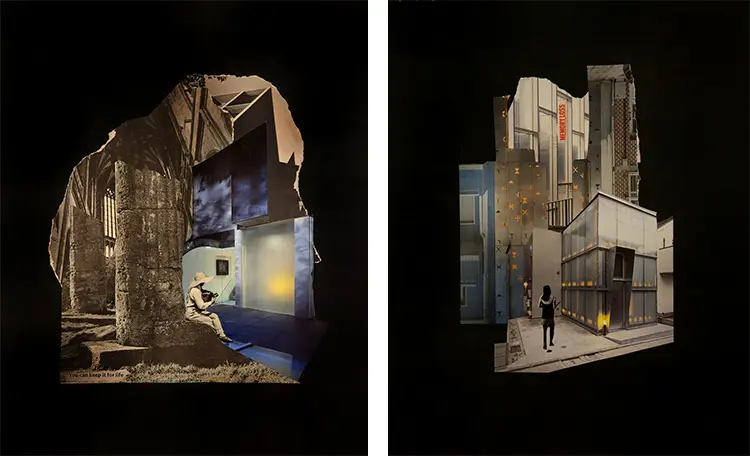
Kenneth Ricci: Crafting Narratives Through Collage
The journey that led Ricci into the world of collage was not charted by academic pursuit or professional ambition but by an accidental engagement with the medium that quickly revealed its possibilities. His lifelong appreciation for the arts, including early ventures into acting and music, provided a creative undercurrent, yet his true artistic identity emerged only after retirement. The simplicity of the medium—scissors, glue, and paper—offered both accessibility and depth, allowing Ricci to approach art-making without preconceived boundaries. This freedom became essential to his process, where each work is shaped by the available materials and the spontaneous decisions they inspire.
Ricci’s artistic evolution is marked by a series of transformations, each new body of work reflecting his growing command over composition and narrative. Moving from 8×24 Masonite panels to heavy black stock paper, he developed smaller-scale series such as “Wait…what?” and “Random Thoughts in the Waiting Room.” These works laid the groundwork for his current series, including the 11×14 “Incongruities” and the 10×7 “Snaps,” which continue to expand his thematic range. Rather than viewing his output as a conventional career, Ricci remains candid about his position within the art world. While he has held six solo exhibitions and participated in dozens of group shows and online galleries, he finds the most meaningful reception for his work in literary journals, where editors frequently pair his collages with short stories or flash fiction.
This alignment with literary contexts reflects the core philosophy behind Ricci’s practice. Rooted in his background in literature and philosophy, his work operates within a conceptual space where image and text converge. His artist statement encapsulates this approach: referencing the parables of Kafka and the aphorisms of Kierkegaard, Ricci frames his creative process as an interplay between constraint and freedom. The improvisational nature of collage—where choice, assembly, and judgment guide the outcome—becomes both a philosophical exercise and an aesthetic exploration.
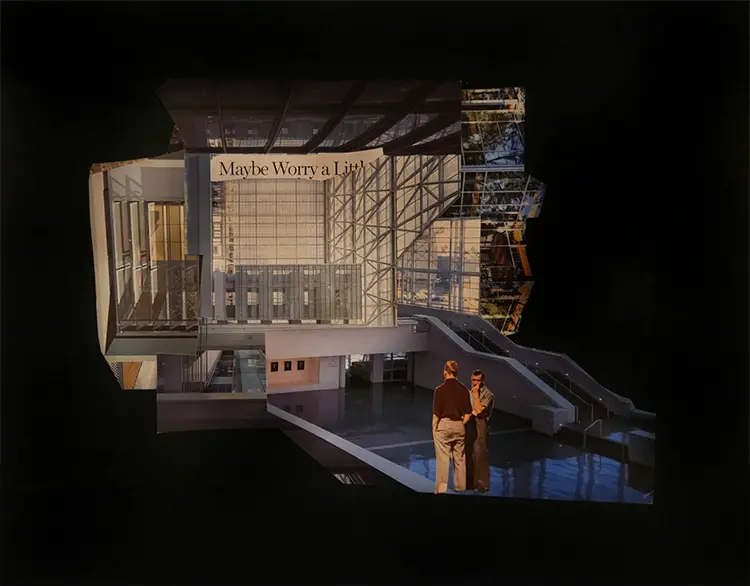
Architectural Ghosts and Human Gestures
Ricci’s artistic style is distinguished by a compelling combination of architectural collage and human expression, creating a visual language that speaks to shared human experiences rather than personal biography. Architectural elements serve as both structure and metaphor, their skewed perspectives and looming presence evoking a sense of dislocation and existential tension. These cityscapes and interiors, constructed from familiar yet recontextualized imagery, form a disorienting stage upon which his human figures perform. Isolated gestures, postures, and expressions become the focal point, embodying the silent struggles, questions, and reflections inherent to the human condition.
The use of text plays a vital role in this compositional strategy, adding layers of meaning and framing the viewer’s interpretation. Ricci’s titles are not mere labels but deliberate invitations to “read” the collage, a process that mirrors the experience of engaging with literature. His philosophical lens, particularly informed by Kierkegaard’s meditations on agency and constraint, permeates each work. The haunting sentiment, “I feel as if I were a piece in a game of chess, when my opponent says of it: That piece cannot be moved,” recurs as a thematic backbone, highlighting the existential dilemmas that surface within his compositions.
Despite the universality of the themes Ricci addresses, the pieces themselves are deeply individual in their construction. His large-scale work “Freud’s Sister: A Collection of Short Love Stories” represents a turning point in his practice—a deliberate return to the larger canvas and a conscious application of narrative structure and negative space. This piece, along with the pivotal “A Failure to Impress,” signals the moment where his narrative ambitions fully took shape. These works are not autobiographical confessions but milestones in his creative development, marking lessons learned and concepts refined.
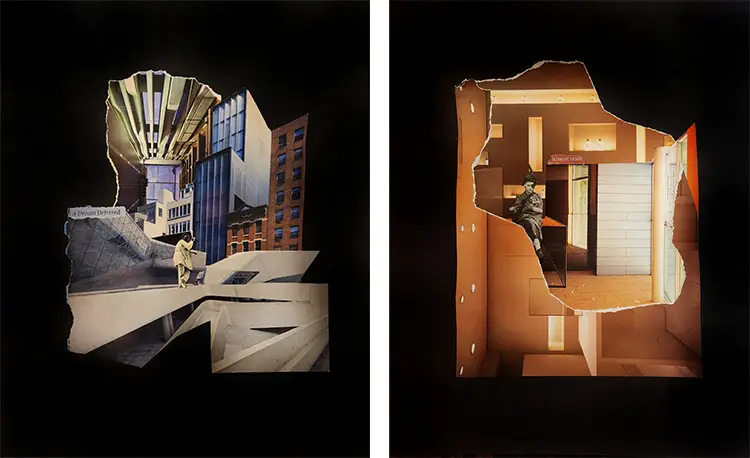
Kenneth Ricci: The Nocturnal Studio and the Search for Continuity
Ricci’s workspace is as distinctive as his artistic approach—a one-bedroom apartment in Manhattan where space is limited but inspiration is abundant. His worktable, surrounded by architectural books and a cherished collection of vintage National Geographic magazines from the 1920s to the 1940s, serves as both library and laboratory. These archives of anonymous faces and forgotten buildings supply the raw material for his collages, their silent histories reassembled into new narratives. Images are kept in a large tray, sorted not by category but by instinct, awaiting the moment they will find their place within a composition.
The solitude of Ricci’s process is profound. Working predominantly between the hours of 2 and 5 AM, his practice unfolds in the stillness of the night, accompanied only by his cat and the soft glow of lamplight. In this quiet space, distractions vanish, allowing for a focused engagement with the materials at hand. This nocturnal ritual reinforces the introspective and contemplative nature of his work, where each choice is guided by judgment and discovery rather than rigid planning. The analogue nature of his process—cutting, arranging, and gluing by hand—further anchors his creative expression in the tangible and immediate.
Looking toward the future, Ricci reflects on the impermanence of his creations with a mix of pragmatism and hope. At seventy-six, he acknowledges the uncertainty of what will become of his collages, voicing a desire for a repository where unclaimed works might find a home beyond obscurity. While this dream remains unrealized, it underscores a central philosophy that permeates his practice: the process itself holds the ultimate significance. In Ricci’s view, the act of creation—each cut, each assembly, each resolved narrative—is the destination, not merely a means to an end.
